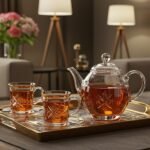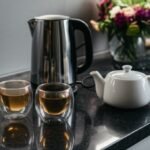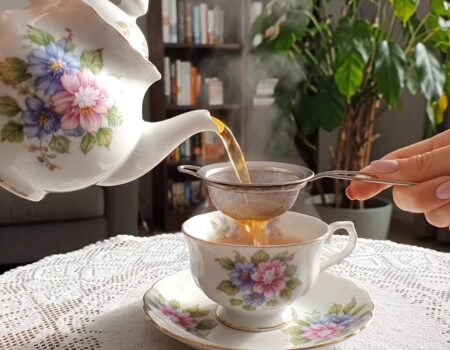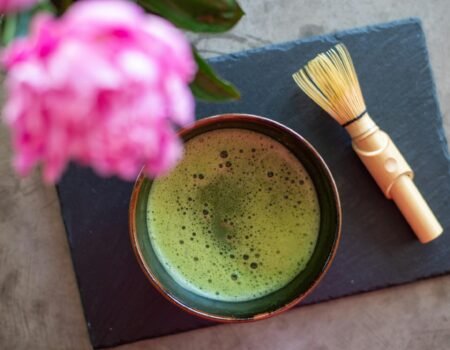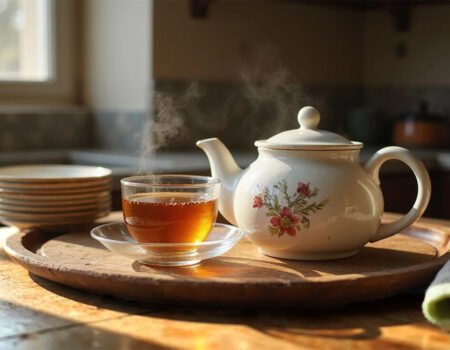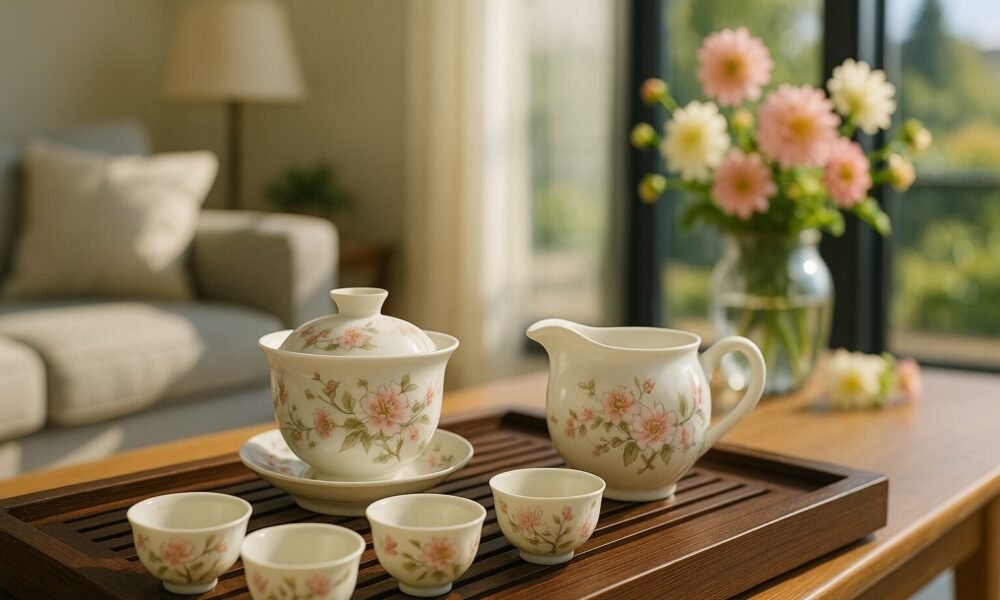
Enhance Your Tea Experience with Glass Fairness Cups and Gong Dao Bei Pitcher
Index
Index
Have you ever poured tea for friends only to find some cups stronger than others? Fairness cups, also known as Gong Dao Bei or Cha Hai, solve this common problem by creating equal strength in every serving.
These special vessels act as middle steps between your teapot and drinking cups, mixing the brew for perfect balance. This guide will show you how glass fairness cups enhance both the flavor and visual beauty of your tea sessions.
Key Takeaways
- Fairness cups (Gong Dao Bei or Cha Hai) ensure everyone gets tea with equal strength and flavor.
- These vessels originated during the Ming Dynasty (1368-1644) and became widespread during the Qing Dynasty.
- Glass fairness cups show off tea color while ceramic versions retain heat better.
- Using a fairness cup prevents over-steeping and allows tea particles to settle for a clearer drink.
- Pour from your teapot into the fairness cup first, then distribute to individual cups in a circular motion.
What is a Fairness Cup?
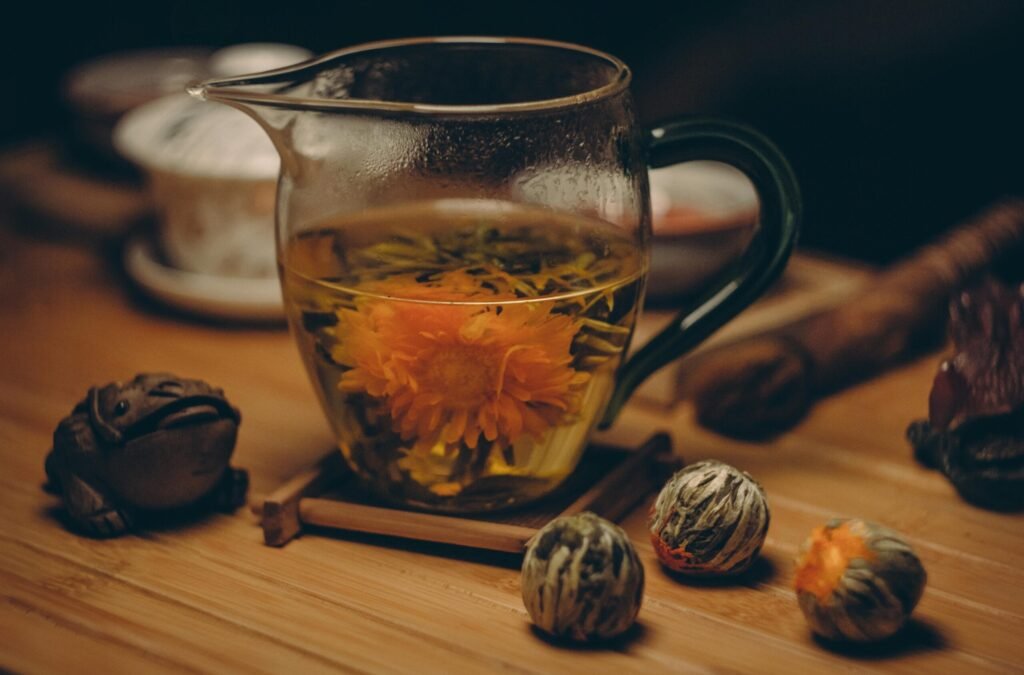
A fairness cup, known as Gong Dao Bei or Cha Hai in Chinese tea culture, serves as the bridge between your teapot and drinking cups. This glass or ceramic vessel creates equal strength and flavor in each cup of tea, making it vital for both formal ceremonies and casual tea sessions.
Defining the Gong Dao Bei and Cha Hai
The Gong Dao Bei, which translates to “fairness cup” in Chinese, serves as a vital vessel in traditional tea ceremonies. This pitcher emerged during the Ming Dynasty and acts as a middle step between brewing tea and serving it to guests.
Tea masters pour brewed tea from the teapot into this container before distributing it to individual cups. Many Western tea enthusiasts know this same tool as “cha hai,” though both names refer to the same essential piece of teaware.
Glass fairness cups allow tea drinkers to see the rich color of their brew, while ceramic or porcelain versions might offer better heat retention. The main purpose remains consistent across all materials – ensuring every person receives tea with identical strength, flavor, and aroma.
This principle of equity stands central to Chinese tea culture, where sharing quality tea experiences creates bonds between participants during the ceremony.
The Principle of Equity in Tea Serving

Beyond understanding what a Gong Dao Bei or Cha Hai is, we must grasp the core principle behind these vessels: equity in tea serving. This principle forms the backbone of traditional Chinese tea ceremonies, where each guest deserves an identical tea experience.
The fairness cup ensures this balance by collecting all brewed tea from the teapot before distribution, creating a uniform mixture where flavor, strength, and temperature remain consistent for everyone.
Glass fairness pitchers with capacities between 150 to 300 ml allow hosts to serve black, oolong, and Pu-erh teas with perfect equity.
Tea masters value this fairness deeply because uneven steeping leads to vastly different tastes. The first cups poured directly from a teapot contain weaker flavors, while the last cups become too strong and bitter.
The sharing pitcher solves this problem through equal distribution of tea particles and infusion strength. During formal tea ceremonies, this practice shows respect toward guests since no one receives inferior or superior tea.
The fair cup thus transforms a simple drink into a symbol of harmony and balance, reflecting the cultural values embedded in Chinese gongfu tea traditions.
The Essential Role of Fairness Cups in Tea Ceremonies
Fairness cups play a crucial role in tea ceremonies by creating equal tea experiences for all guests. These special vessels help maintain the perfect strength and taste of each pour while showing off the tea’s true colors.
Ensuring Consistent Flavor and Strength for All Guests
Glass fairness cups serve a vital purpose in tea ceremonies by creating equal tea experiences for everyone. Each guest receives the same flavor profile and strength because the pitcher blends all the tea before serving.
This mixing process prevents the common problem where early cups taste weaker while later cups become too strong and bitter. The gong dao bei holds 2-4 servings per pour, allowing the host to distribute identical portions to all participants.
Tea masters value this equity in serving because it promotes unified tasting experiences across different tea types. Without a sharing pitcher, guests might form varied opinions about the same tea based solely on when they were served.
The fairness cup creates harmony in the tea ceremony while showcasing the true character of premium teas through consistent color, aroma, and taste profiles for all participants.
Preventing Over-Steeping of Tea Leaves
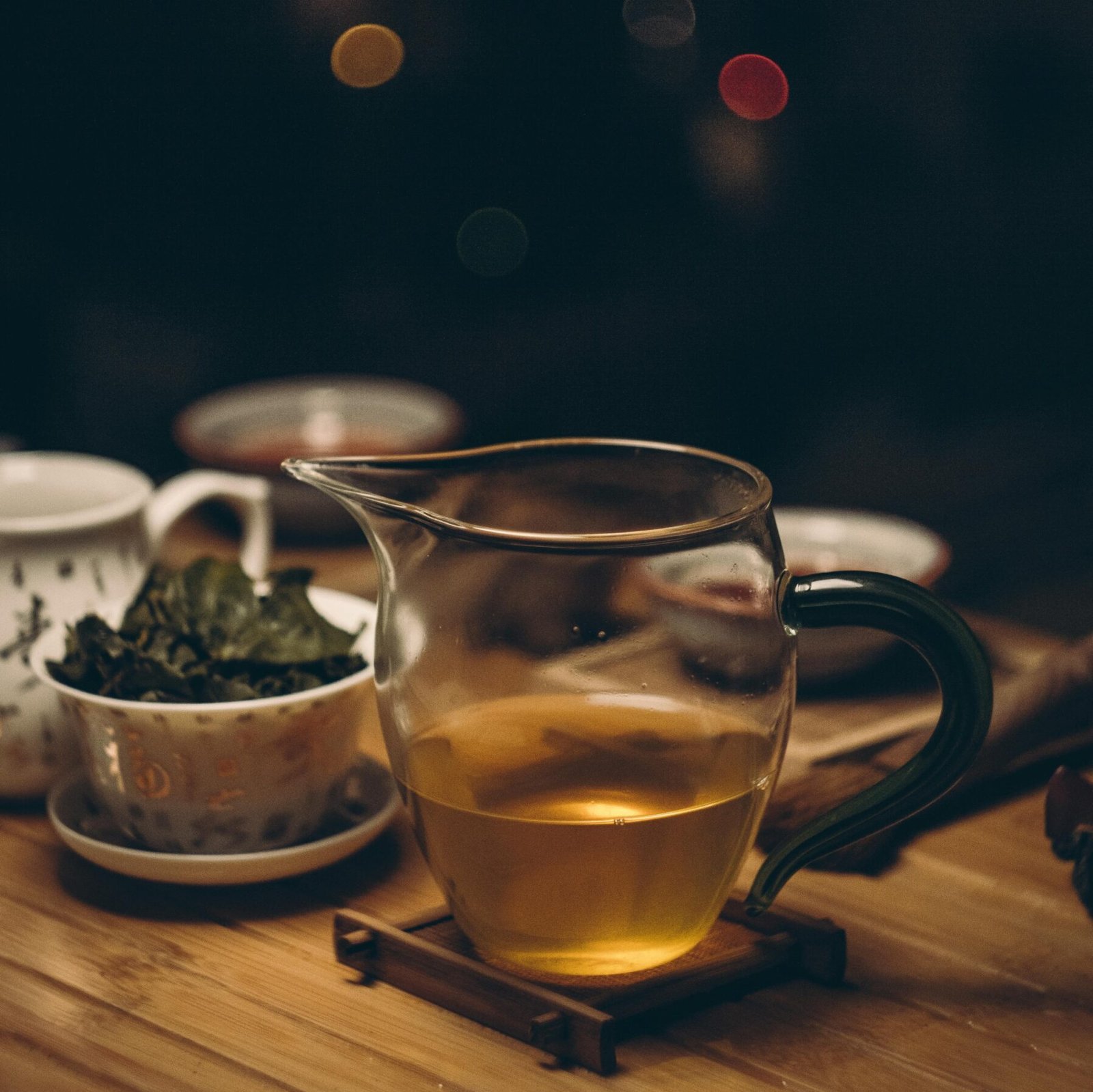
A fairness cup stops the brewing process right away, which keeps your tea from turning bitter. Tea leaves release tannins that create an unpleasant taste if left too long in hot water.
The gong dao bei solves this problem by giving you a place to pour your tea once it reaches perfect strength. Many tea lovers consider this step vital for delicate varieties like green or white teas that can become harsh within seconds of over-brewing.
The sharing pitcher also helps maintain the flavor profile you want from your chosen leaves. By transferring the liquid from your teapot or gaiwan into the fairness cup, you halt extraction immediately.
This control allows you to enjoy the subtle notes and aromas that might otherwise be lost. The next aspect of using a fairness cup involves how it helps settle tea particles for a clearer cup.
Facilitating the Settling of Tea Particles
Beyond preventing over-steeping, fairness cups serve another vital purpose in the tea ceremony. Tea particles naturally float in freshly brewed tea, especially with certain varieties like pu-erh or heavily broken leaf teas.
The glass gong dao bei provides space for these tiny bits to sink to the bottom before serving. This settling process creates a clearer, more pleasant cup for everyone at the table.
Many tea enthusiasts appreciate watching this natural filtration through transparent fairness cups.
The settling function improves both the visual appeal and texture of your tea experience. No one enjoys tea leaves or sediment in their cup! The fairness pitcher acts as a middle step between teapot and teacup, giving particles time to separate from the liquid.
Glass versions let you see this process in action, while ceramic tea pitchers offer the same benefit with different aesthetic qualities. This simple yet effective feature transforms ordinary tea drinking into a refined art of tea appreciation.
Aiding in Temperature Moderation
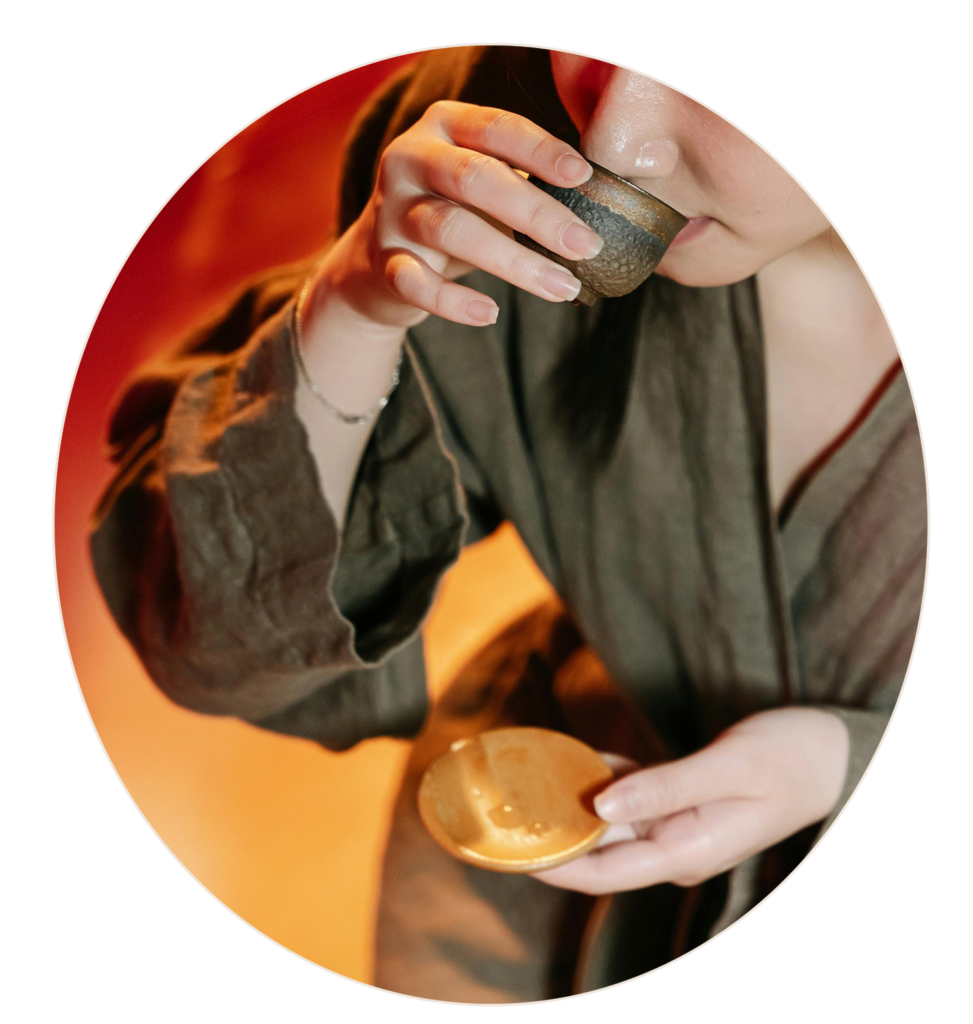
Beyond settling tea particles, fairness cups excel at temperature control for your tea. Glass fairness cups distribute heat evenly throughout the liquid, creating the perfect serving temperature for every cup.
Tea that flows directly from a hot teapot might scald your guests’ lips, but the fairness cup cools the brew to an ideal drinking temperature. This cooling function proves especially valuable for delicate green and white teas that taste best when served slightly cooler than their brewing temperature.
Tea experts value this temperature moderation feature because it enhances the overall tea-drinking experience. The fairness cup acts as a heat-resistant vessel that optimizes each sip.
Many tea lovers choose borosilicate glass fairness cups specifically for their excellent heat distribution properties. During traditional Chinese tea ceremonies, this temperature control step allows guests to focus on the flavor rather than waiting for too-hot tea to cool down.
The gong dao bei creates consistency in both taste and temperature for everyone at the tea table.
Historical Development and Adoption
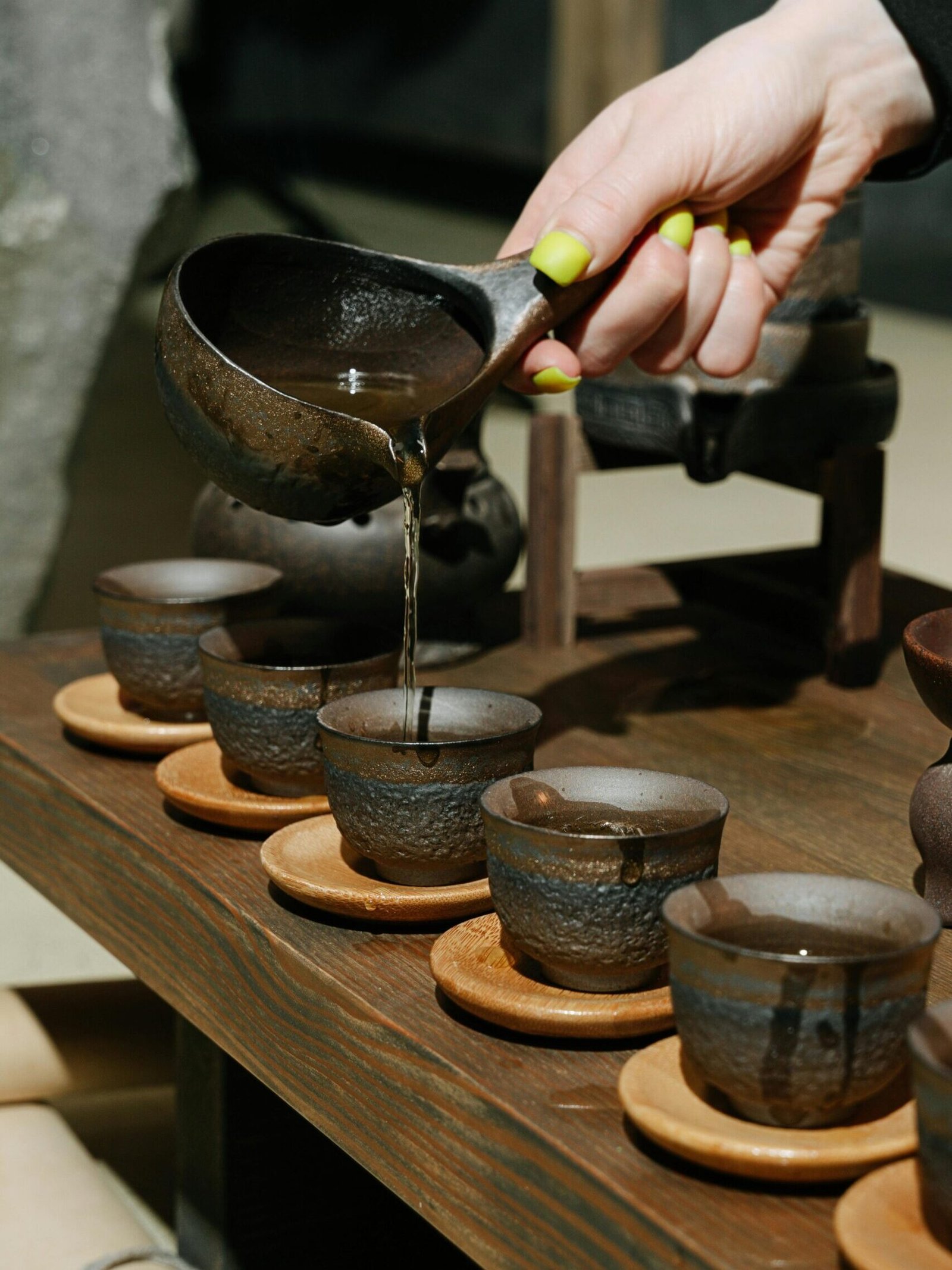
The fairness cup traces its roots to ancient Chinese tea traditions, evolving from simple shared vessels to the refined Gong Dao Bei we know today – discover how this essential piece of teaware spread across Asia and gained prominence in both formal ceremonies and casual tea gatherings.
Origins and Popularization in Tea Culture
Fairness cups trace their roots to the Ming Dynasty (1368-1644), a period that saw major shifts in Chinese tea culture. During this era, loose-leaf brewing gained popularity over compressed tea cakes, creating a need for tools that could distribute tea evenly.
Tea masters began using simple vessels to collect brewed tea before serving, ensuring each guest received the same strength and flavor. This practice aligned perfectly with the Chinese cultural value of equity during social gatherings.
Glass fairness cups became widespread during the Qing Dynasty as gongfu cha (kung fu tea) ceremonies gained prominence. Tea houses across China adopted these sharing pitchers as standard equipment for proper tea service.
The transparent nature of glass allowed tea drinkers to appreciate the color and clarity of their brew before tasting. As tea culture spread throughout Asia, the gong dao bei became an essential piece in formal tea presentations, symbolizing both hospitality and the democratic sharing of tea’s benefits among all participants.
Evolution from Earlier Serving Practices
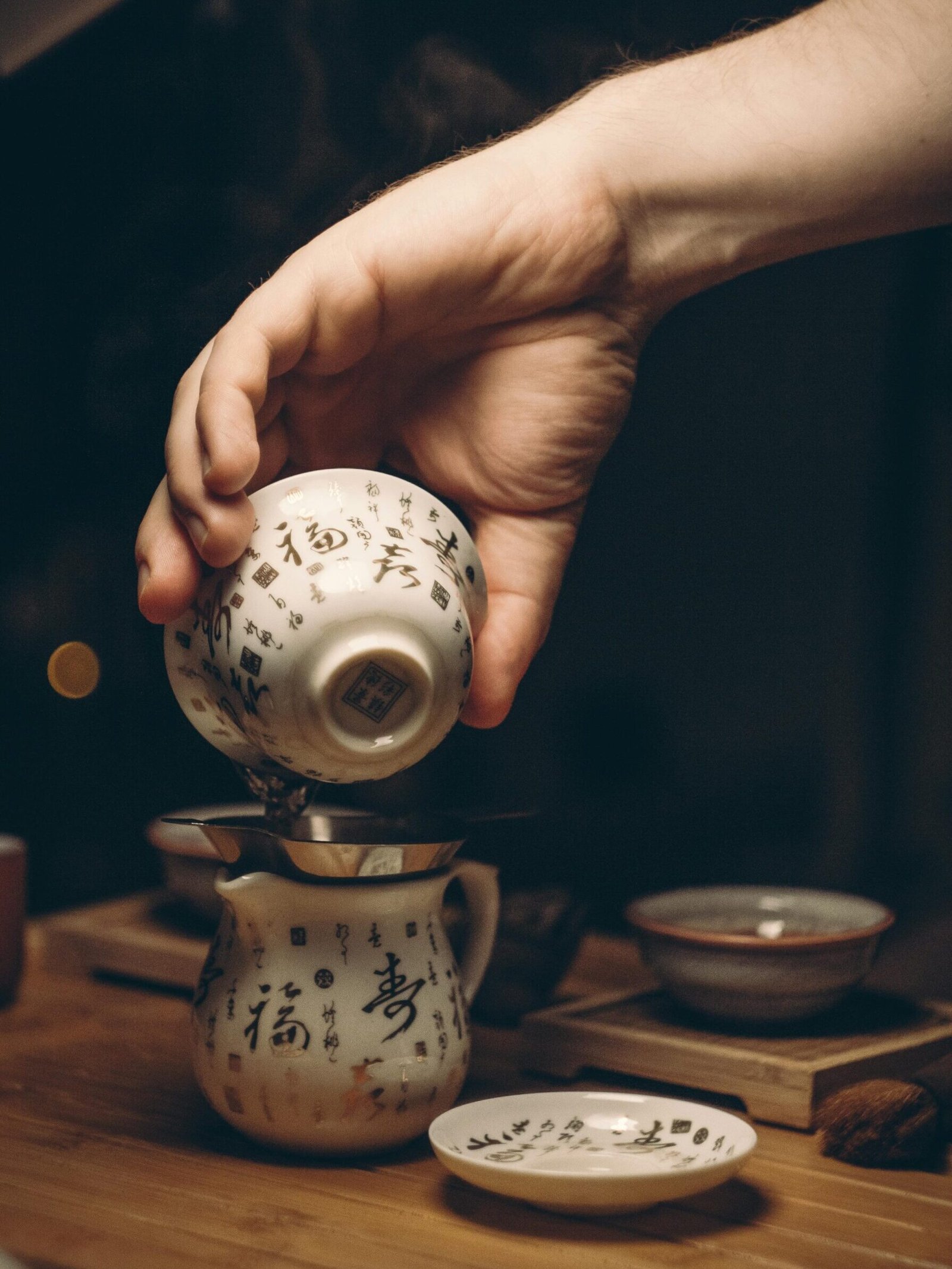
Before fairness cups became standard in tea ceremonies, tea servers poured directly from teapots to individual cups. This method created problems – the first cup received weaker tea while the last cup got stronger, more concentrated tea.
During the Ming Dynasty (1368-1644), tea masters began using interim vessels to solve this issue. Glass fairness cups gained popularity in the 19th century as tea culture spread across China and into Taiwan.
The gong dao bei evolved from simple bowls to specialized pitchers with built-in strainers for clearer tea.
Tea sharing practices transformed with these innovations. Early tea ceremonies relied on pouring skill alone to achieve balance. Modern gongfu tea sessions now include the fairness cup as essential teaware.
This shift reflects growing emphasis on equity in tea service and appreciation for the visual aspects of brewing. The ceramic and glass vessels we use today allow tea drinkers to enjoy the color and clarity of tea before it reaches their cups.
This evolution shows how tea culture adapts while maintaining its core values of harmony and shared experience.
Common Materials and Their Attributes
Different materials shape your tea experience, from glass that shows off tea colors to porcelain that keeps heat steady and clay that adds unique depth to flavors – discover which material will transform your next tea session.
Glass Fairness Cups: Visual Appreciation
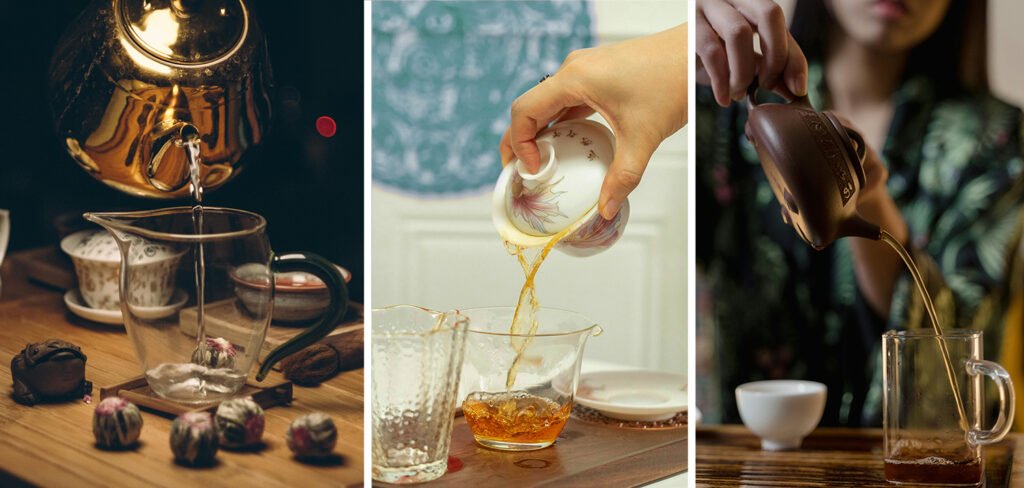
Glass fairness cups offer tea lovers a special treat for the eyes. The heat-resistant glass shows off the true color of your tea, letting you enjoy its beauty before you sip.
These transparent vessels come in several distinctive shapes: the Water Droplet mimics nature’s graceful form, the Hexagon brings modern geometry to traditional tea service, the Walnut features organic, irregular curves, and the Upright stands tall with its vertical silhouette.
Each design serves the same purpose while adding its own artistic touch to your tea ceremony.
Tea colors tell stories about brewing time, strength, and type. A glass gong dao bei reveals these secrets clearly. You can watch tea particles settle at the bottom, ensuring a clean pour into each cup.
This visual aspect adds depth to the tea tasting experience, making glass fairness cups popular among both casual drinkers and serious tea enthusiasts who value both function and beauty in their teaware.
Porcelain Fairness Cups: Neutrality and Heat Retention
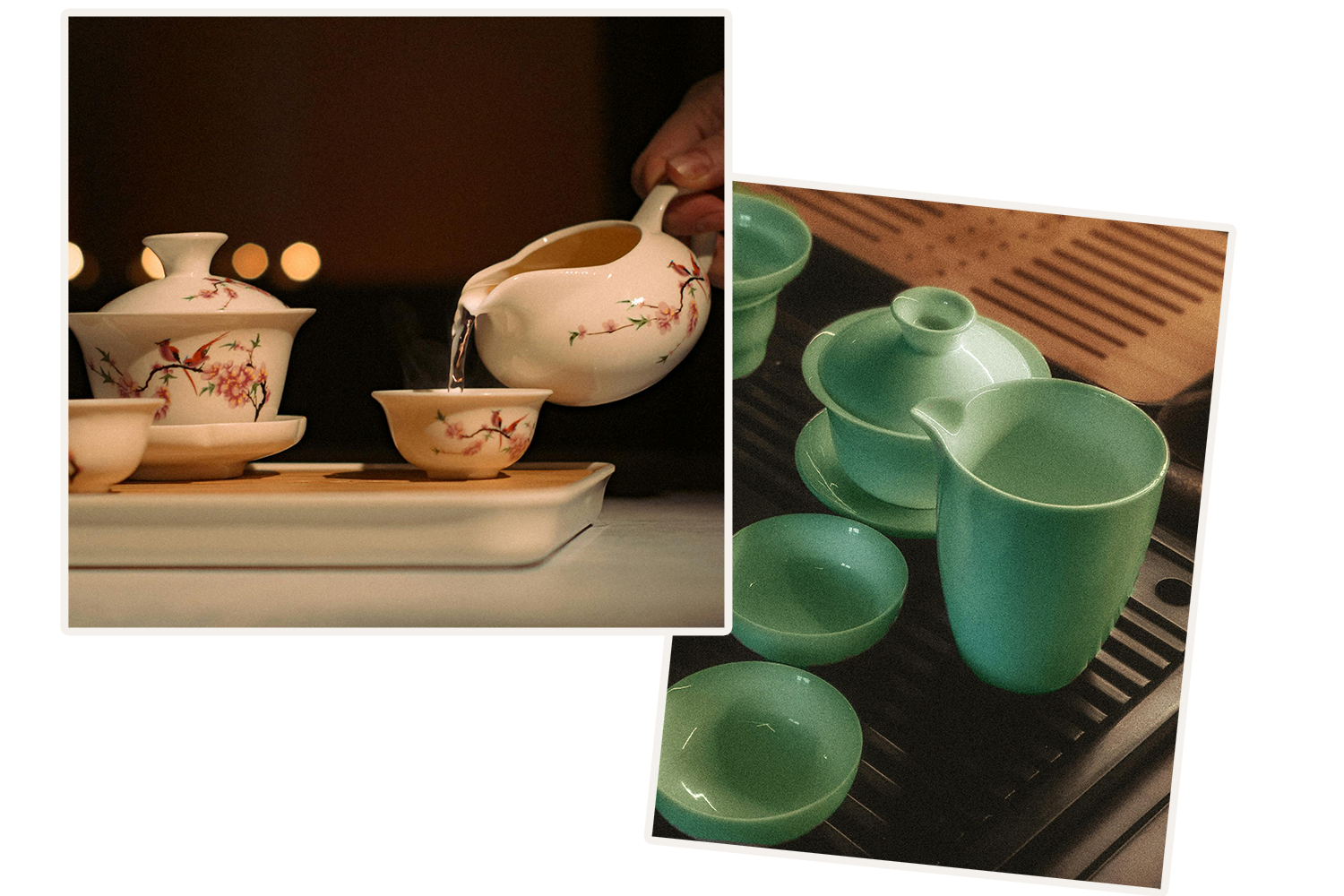
Porcelain fairness cups offer perfect neutrality for tea service, neither adding nor taking away from your tea’s flavor. These high-quality ceramic vessels maintain heat better than glass options, keeping your tea at the ideal temperature longer during serving.
The smooth texture and elegant design of porcelain gong dao bei add a touch of refinement to any tea ceremony while ensuring even flavor distribution for all guests.
Clay fairness cups bring their own unique properties to the tea table, making them another excellent choice for dedicated tea enthusiasts.
Clay Fairness Cups: Unique Properties and Considerations
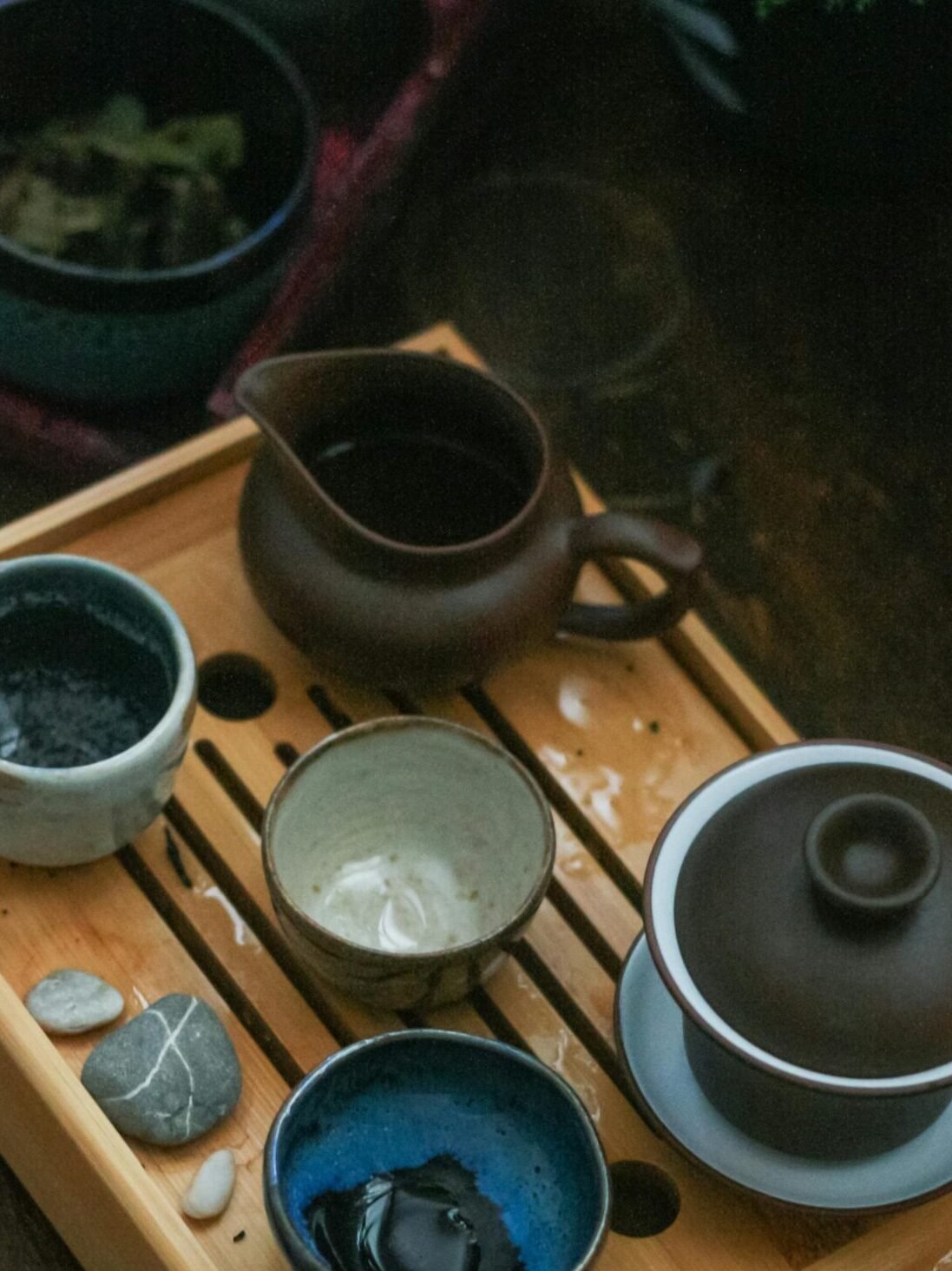
Clay fairness cups bring special qualities to tea serving that other materials can’t match. Purple clay vessels, especially those made from Yixing clay, absorb tiny amounts of tea with each use.
This absorption process creates a seasoned surface that many tea lovers prize for enhancing both aroma and flavor. The porous nature of clay also helps retain heat longer than glass, keeping your tea at the ideal temperature throughout your tea ceremony.
These natural properties make clay fairness cups popular among serious tea enthusiasts who value traditional Chinese tea practices.
Proper care becomes essential for clay fairness cups to maintain their unique benefits. Hand-crafted purple clay requires gentle cleaning without harsh soaps that might damage the developing patina.
Most experts suggest rinsing only with hot water after each use. The material’s heat retention works wonderfully for most teas but might not showcase the visual aspects as effectively as glass versions.
Tea particles may also settle differently in clay vessels compared to smoother materials. Many tea connoisseurs dedicate specific clay fairness cups to particular tea types to prevent flavor mixing and preserve the distinctive character of each tea variety.
How to Use a Fairness Cup in Gongfu Cha
Using a fairness cup in Gongfu Cha creates a smooth rhythm between brewing and serving. Pour the tea from your teapot into the fairness cup first to blend the flavors before filling each guest’s cup.
The Process of Decanting and Serving
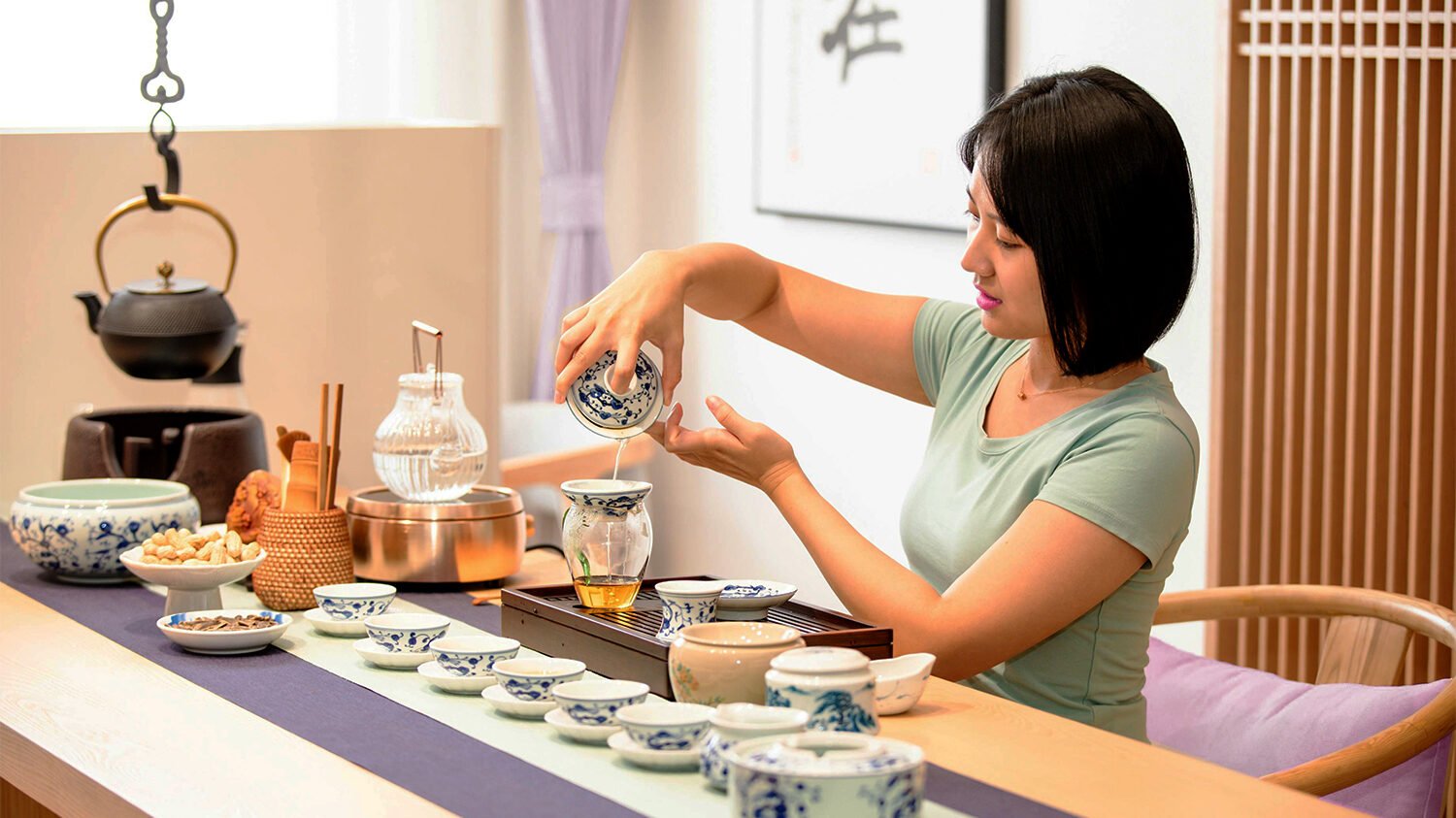
The gong dao bei serves as the heart of any proper tea ceremony. This fairness cup ensures every guest receives tea with the same flavor strength and clarity.
Preparing to Pour
- Position your teapot 3-4 inches above the gong dao bei
- Pour through a strainer to catch any leaf particles
- Fill to 80% capacity to prevent spillage
- Rest for 5-10 seconds to distribute heat evenly
The Art of Distribution
- Appreciate the clarity through the glass walls
- Lift with smooth movements using your dominant hand
- Begin with the farthest cup, pouring in a circular motion
- Pour in two passes: Small amounts first, then return to complete the filling
- Empty completely to prevent mixing future infusions
Ceremony Completion
- Place the gong dao bei with spout facing away from guests
- Wait for all cups to be filled before inviting guests to drink
- Rinse between tea types with hot water to preserve flavor purity
Integration with Other Gongfu Teaware
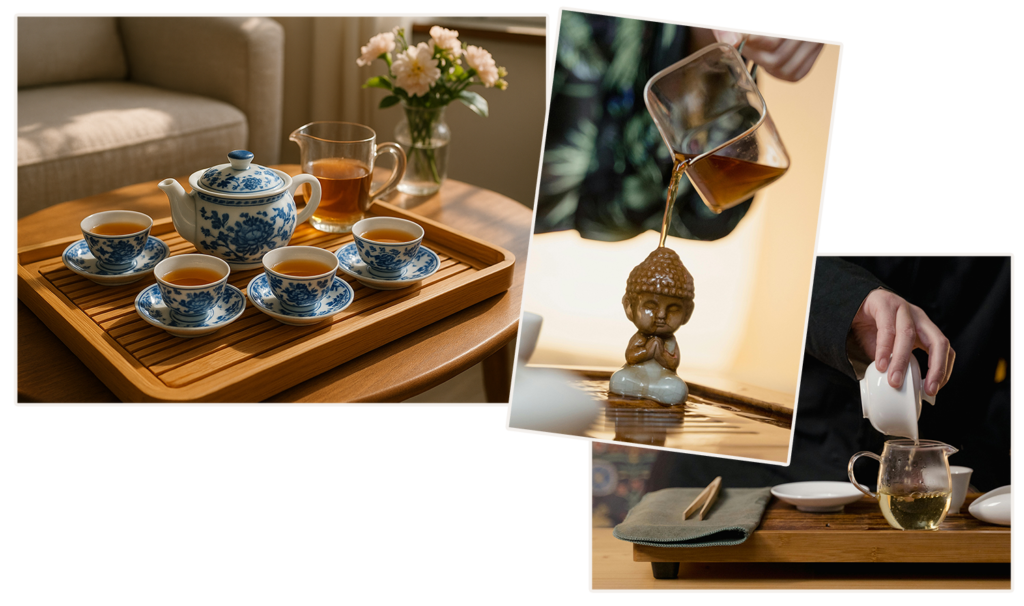
Glass fairness cups work with many gongfu tea tools to create a complete brewing system. Each piece plays a role in bringing out the best flavor from your tea leaves.
Essential Brewing Partners
Your glass fairness cup pairs perfectly with small teapots and gaiwans to control steep time and ensure even distribution. Tea strainers rest atop the sharing pitcher, catching loose leaves that might create bitterness. Each brewing vessel works with the gong dao bei to deliver consistent strength and character to every cup.
The Serving Experience
Glass pitchers showcase tea’s visual beauty—from pale jade greens to deep amber oolongs. Tasting cups receive their portion from the fairness cup, guaranteeing identical flavor for each guest. Formal ceremonies often include aroma cups alongside the gong dao bei for appreciating fragrance before tasting.
Supporting Elements
Serving trays and drainage-equipped tea tables protect surfaces while creating organized brewing spaces. Bamboo tools, scales, and timers support precise preparation. Even tea pets find their place beside your sharing pitcher, receiving traditional tea splashes that add personality to your practice.
Conclusion
Fairness cups and Gong Dao Bei pitchers transform simple tea drinking into a rich cultural practice. These vessels ensure each cup tastes the same for all guests while adding beauty to your tea table.
The clear glass options let you watch the tea’s color bloom, adding a visual dimension to your sensory experience. Tea ceremonies become more authentic when you include these traditional tools in your routine.
Your guests will notice the difference in both flavor and presentation when you serve with these elegant, practical pieces.

FAQs
1. What is a gong dao bei or fairness cup in Chinese tea ceremony?
A gong dao bei, also called a fairness cup or tea sharing cup, serves as a tea dispenser in traditional Chinese tea ceremonies. This vessel ensures each cup gets the same flavor of the tea. It acts as a middle step between your teapot and the cups for your guests.
2. Why should I use a glass fairness cup instead of other materials?
Glass fairness cups let you see the true color of your tea while pouring. They work well for both casual tea drinking and formal gongfu tea sessions. Many tea lovers prefer glass for its clean taste and easy maintenance.
3. How do I properly use a gong dao bei during tea brewing?
Pour tea from your yixing teapot into the fair cup first, then distribute it into individual cups. This method ensures everyone gets tea with the same strength and taste. The gong dao bei prevents the last person from getting only strong tea.
4. Can I use a gong dao bei with all types of tea?
Yes, you can use a gong dao bei with any loose tea. It works perfectly for Chinese kung fu tea ceremonies but also enhances your experience with other tea styles. The pitcher helps maintain consistent flavor regardless of what tea you brew.
5. What’s the difference between ceramic and glass gong dao bei?
Ceramic gong dao bei pitchers often retain heat better and may enhance certain tea flavors through their porous nature. Glass versions allow you to appreciate the tea’s color and don’t absorb flavors, making them more versatile for different tea types. Both materials have authentic Chinese tea ceremony applications.
6. How do I clean and maintain my tea sharing cup?
Rinse your gong dao bei with hot water after each use. Avoid soap when possible as it may affect the taste of future tea. For handmade ceramic pieces, gentle handling prevents chips, while glass fairness cups can be cleaned more thoroughly when needed.
References
- https://orientaleaf.com/blogs/tea-101/mastering-the-fairness-cup-gong-dao-bei-a-complete-resource?srsltid=AfmBOoo_VH4Xl-HBy2EvswWkv2dwTkWmqhDBHdmXQfQ2jToNtftddyA8
- https://orientaleaf.com/blogs/tea-101/mastering-the-fairness-cup-gong-dao-bei-a-complete-resource?srsltid=AfmBOoo3i63WgTo7xXbUS_Dyk7Mz3rkgnlbOytyoCmL_vcqpMSF3XklJ
- https://orientaleaf.com/collections/fairness-cup-gongdao-cup?srsltid=AfmBOooyOo46N77PSPi7oWfGEi340wwacvu2q0Ms0wIlbss6fbKGmmdE
- https://chasourcing.com/collections/tea-pitcher/?srsltid=AfmBOorANZQ3ue8_iETo56MQad78MzrxT32F4vKO3G1v6DCATaX5-1sZ
- https://orientaleaf.com/blogs/tea-101/mastering-the-fairness-cup-gong-dao-bei-a-complete-resource?srsltid=AfmBOoqE85vYuKYxKXtqlmdwGWgpna78gDkx1mzFv4iwyOLZ2R4Ax9-E
- https://taiyangteasus.com/products/tea-pitcher-gong-dao-bei-fairness-cup
- https://pressbooks.cuny.edu/gaiwan/chapter/the-fairness-cup-ensuring-balance-in-every-pour/
- https://orientaleaf.com/blogs/tea-101/mastering-the-fairness-cup-gong-dao-bei-a-complete-resource?srsltid=AfmBOopzz1UbIPKiPkTBn_TCH0Unzg8n9-iol2GttfQLFVIUrn83KxEB
- https://orientaleaf.com/blogs/tea-101/mastering-the-fairness-cup-gong-dao-bei-a-complete-resource?srsltid=AfmBOophGp1yAjZ64djhm9Y3pGIEWf5gw7Ln0MiIy0tynPL2OpsX2ESY
- https://orientaleaf.com/products/glass-fairness-cup?srsltid=AfmBOopIU30vMLGa1JVI90QjSAXGWaAE0h38wUvSVnIH8NQ9xAPVs2XK
- https://www.amazon.com/Tea-Ceremony-Fairness-Porcelain-Pitcher-style3/dp/B0F2551YR3
- https://www.umiteasets.com/collections/fair-cups?srsltid=AfmBOopCcwHS5onuDsgMVbH4hnNpUC7eqwdEy7E2ujGyhixdh0w4P0jn
- https://orientaleaf.com/blogs/tea-101/mastering-the-fairness-cup-gong-dao-bei-a-complete-resource?srsltid=AfmBOoqgKrsMrv43P5HXYfhdTQmf5NlZDD3dJ6LGo1FYZex77mvtZ5gL
- https://www.teadrunk.com/blogs/educational-articles/gong-fu-cha-teaware-explained?srsltid=AfmBOorX_jeaAcgFse9EYwqFbG9-3bBc0w51Jypijctuq201Wo3Jv0Eq (2021-04-26)
- https://www.teadrunk.com/blogs/educational-articles/gong-fu-cha-teaware-explained?srsltid=AfmBOoqDoLXsoC1_LMp3Sysylh2aWRjR3u6qCfgpcjtvjDYxUrP3g53U (2021-04-26)

